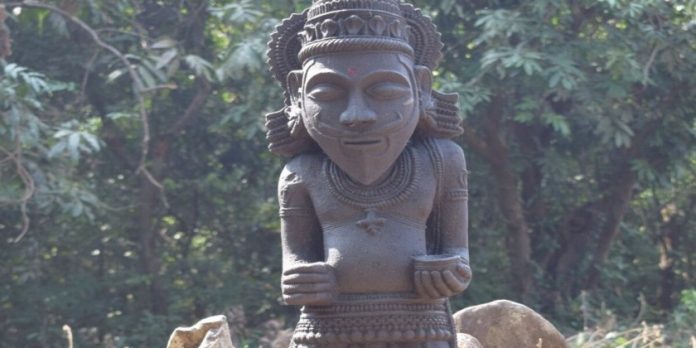This is a story of a wildlife scientist discovering an unexpected ecosystem, and her journey to understand the relationship of people there with the ecosystem. Through this, she tries to find her space between them.
It was another sultry day of May in the Sindhudurg district of Maharashtra during one of my field trips. We had walked a lot in the humid heat that day and it was against my appeals to walk more, that my field assistant Narayan kaaka took me to Kharadi. That turned out to be a welcome respite from the heat we endured as the tall canopies restricted the sun. But quite unexpectedly my shoes almost sunk into the mushy soil as we walked beneath them. Soon I realised there is more to this novelty. As I looked around, I found the trees had solemn and straight trunks with stocky knee-like projections beside them and many smaller roots around. I asked kaaka what this place was. He replied, “This is our devrai”, which is a Marathi term for a sacred grove.
My work on amphibians in this landscape has needed me to go on long trips to beautiful patches of forests nestled among some agricultural settlements across five villages in Sindhudurg; Kharadi was one of them. Narayan Desai, often called kaaka, was a farmer, and became my guide to look for areas with perennial streams. He had previously helped students who visited this oft-overlooked region in the Western Ghats.
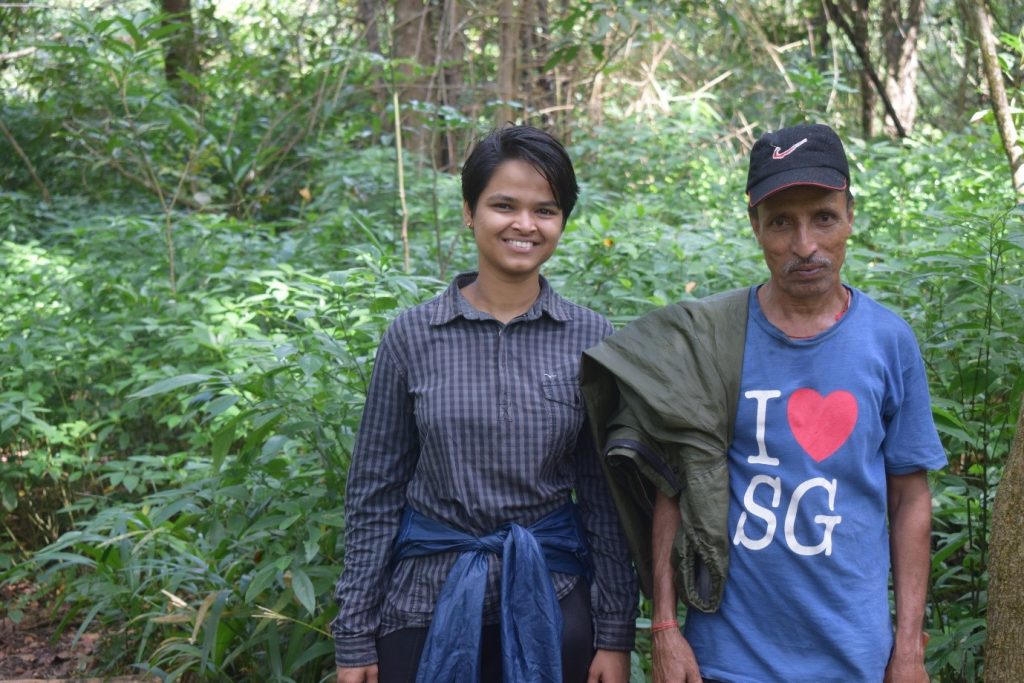
This is a recollection of my first field season in Kharadi in the year 2018 when I wasn’t a seasoned ‘herper’. I was still getting used to looking for potential sites for my study. Kaaka took me through some of my first forest trails with an orchestra of bird chirps and winds laden with the fresh smell of karvi blossoms on some days and petrichor on others. And one day, we reached the devrai. It had a very rainforest charm, with the smell of pungent moisture in the air that mostly came from a decaying litter and of course, there was a mellow jingle of a moving stream inside.
This devrai, I learnt was called Kanhalachi devrai (from the old name of this place, Kanhala). Now, as I still had my questions about these trees, me and a friend Malhar Indulkar tried to find out what we were looking at. We were surprised when we knew that Kanhalachi devrai was the northernmost distributional record of the Myristica swamps.
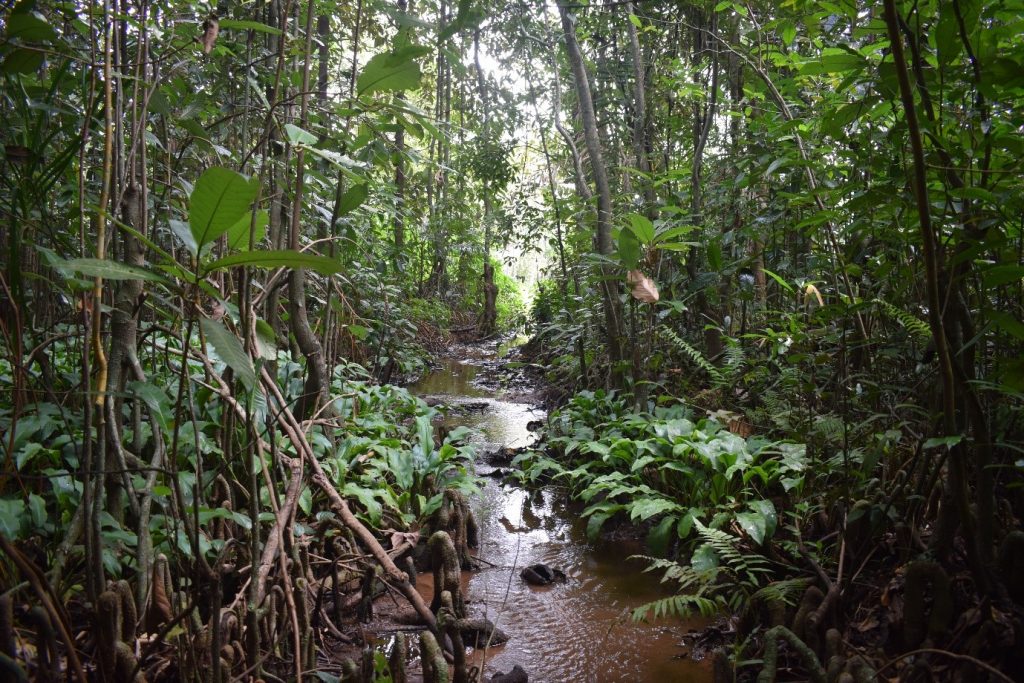
Myristica swamps shelter different types of evergreen trees of an ancient family of Angiosperms, Myristicaceae. These trees have uniquely adapted to live in flooded habitats. They have knee roots which help them with strong support to hold onto to the soft soil. These have special pores on the surface called lenticels to absorb oxygen in such anaerobic conditions. They have seeds which can lie in the soil without germination, till the water begins to dry out from the swamp.
These swamps are more commonly found in the southern western ghats (Karnataka to down south in Kerala). They form an endemic habitat, and were once found along the entire stretch of Konkan coast. As the duration and intensity of monsoon reduced across the Konkan coast, their distribution has shrunk and become fragmented.
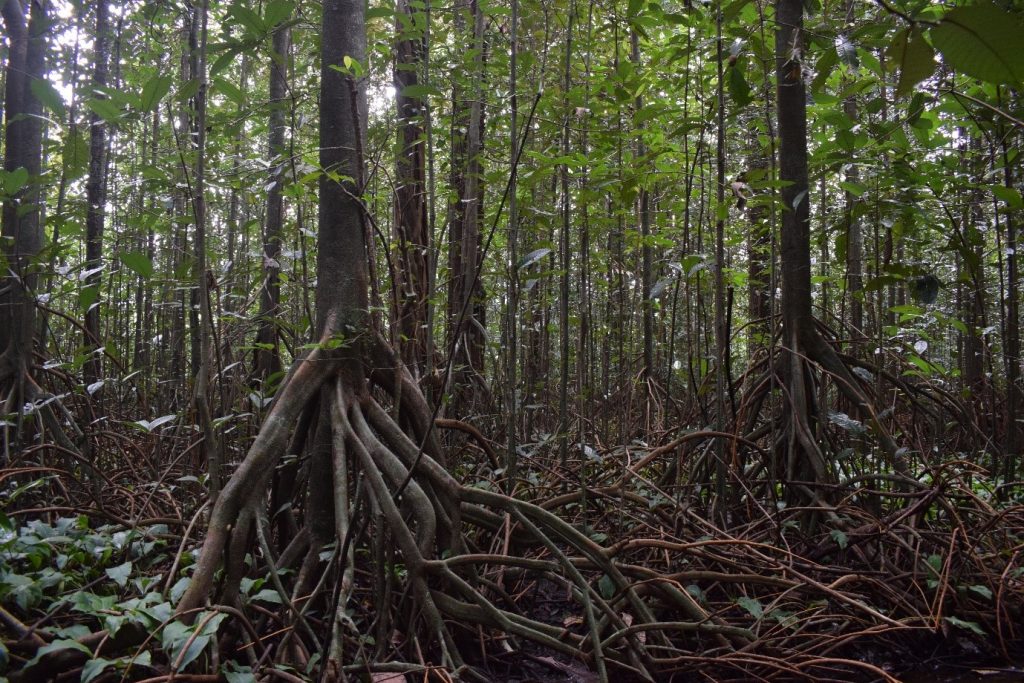
(PC: Krishna Komanduri)
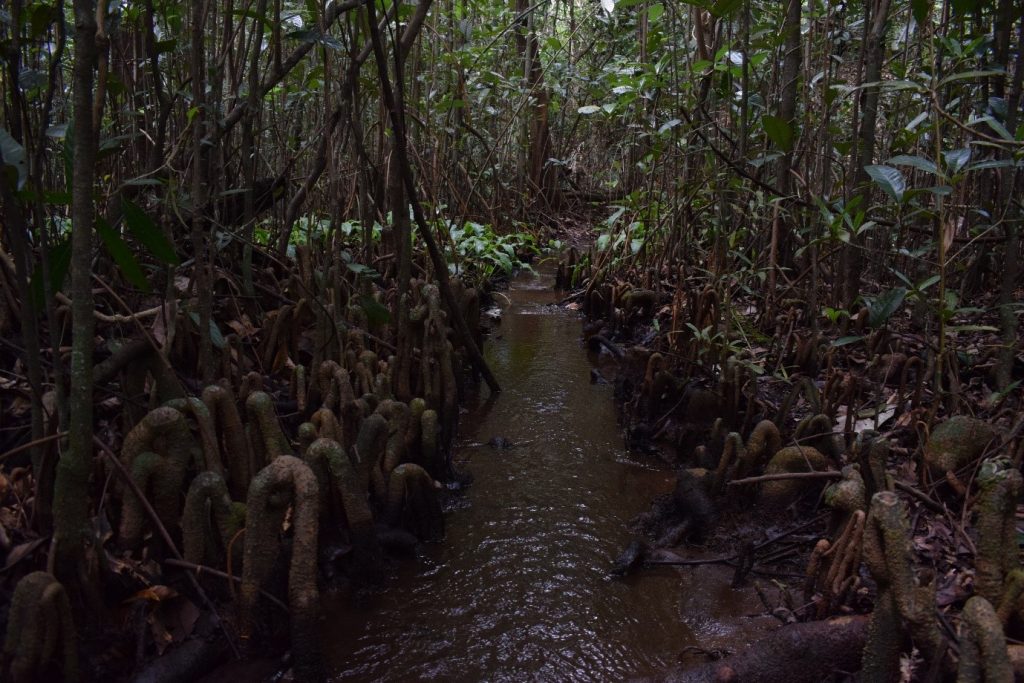
These trees hold a unique place in the local people’s lives. They consider the trees make a sacred grove. They practise an age-old tradition of uprooting a Myristica tree every year during Holi. They believe in Vethal who is a guardian spirit of their sacred groves. He is believed to dumb-found to punish a person who trespasses these sacred groves and keep them under the spell on tall trees before releasing them few days later.
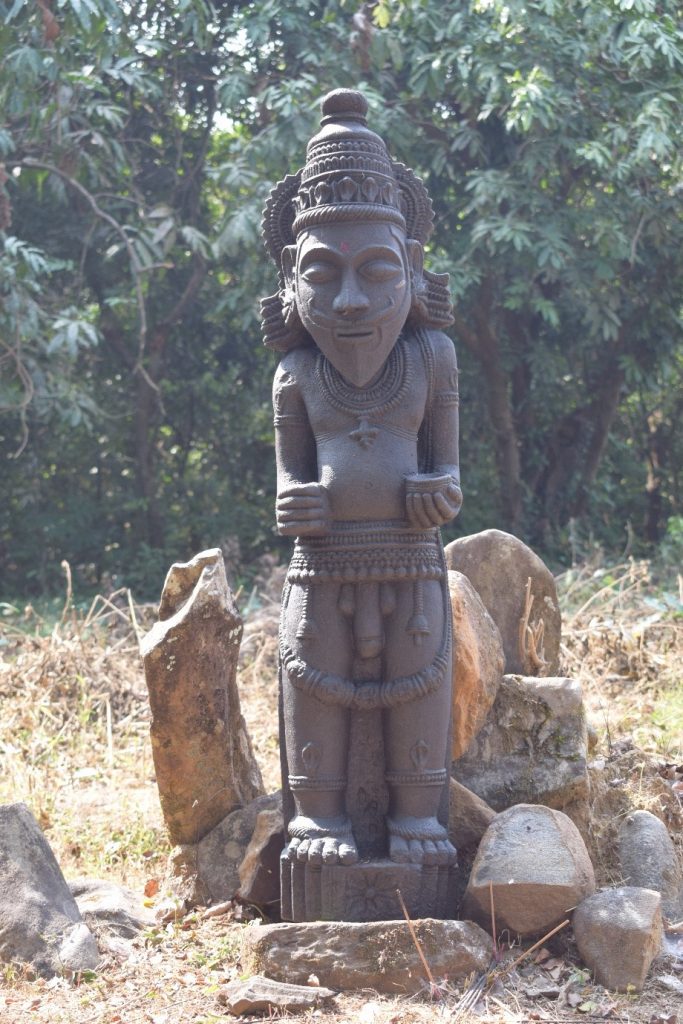
The modern significance of these trees has changed in some ways. People use the unbranched trunks of Myristica trees to make fence around their houses. The watershed potential of the swamp has helped paddy fields, rubber and areca plantations to thrive. These have caused a fall in their numbers.
A fall in their number is a concern for people’s lives as well as ecologically. The water-holding capacity of Myristica allows to maintain the many perennial streams around this rai. This is the primary water source for agriculture, daily consumption in the adjoining area. The potential to store carbon in the soil is more in the Myristica swamps than the non-swamp areas. This quality makes them significant in allaying effects of climate change. These also act like sponge, soaking up water in the monsoon and releasing it slowly during the dry spells. Some species like Mercurana myrsiticapalustris (a frog species found exclusively in Myristica) and Calocypha laidlawi (Myristica sapphire) are dependent entirely on the swamps for their natural history.
Narayan kaaka and some of the people living near this devrai have been of immense help when we visited here many times later. We recorded the presence of tree species like Gymnacranthea canarica (Canara nutmeg), Holigarnia arnottiana and of course Myristica fatua. Species of frogs like Raorchestes ghatii, Raorchestes bombayensis, Indirana chiravasi were recorded inside even during the lean season. We reported this rare habitat, and eventually the National Biodiversity Authority declared this a Biodiversity heritage site in the January of 2021.
This led to a millennial dialogue between nature and people. On one hand the people were extremely proud when we reported this rare habitat from Maharashtra. New projects such as creating a nursery of Myristica trees were tried. On other hand, they were sometimes, defensive when we talked about not felling more trees from this rai. They claimed a rightful ownership to this rai. However, seen from our lens we also saw abuse of their natural resources. The younger generation’s relationship with the rai have changed considerably, leading to an apparent apathy. And they are unclear about how the heritage site declaration changes their rights on the rai.
While locals and ecologists figure out their way through the new status of the rai, life goes on as usual here. Holi has passed this year too and the traditions have been followed. And I, sometimes, remember the Vethal of kaaka’s story, and wonder how difficult it must be for Vethal today to find so many tall trees there, to punish the trespassers.

